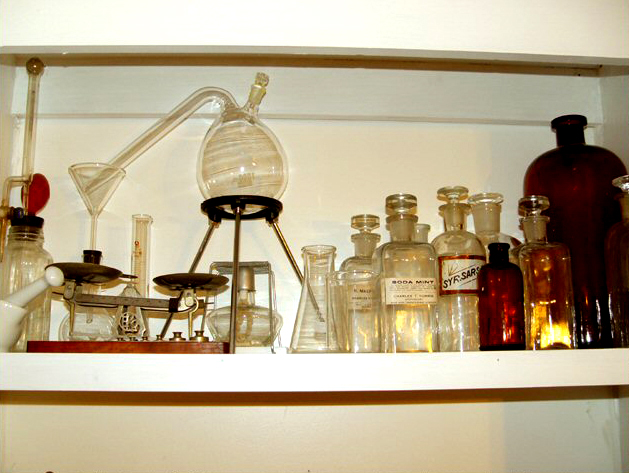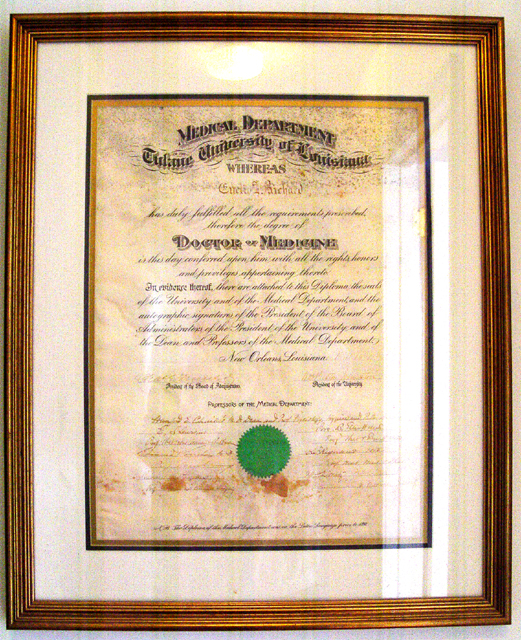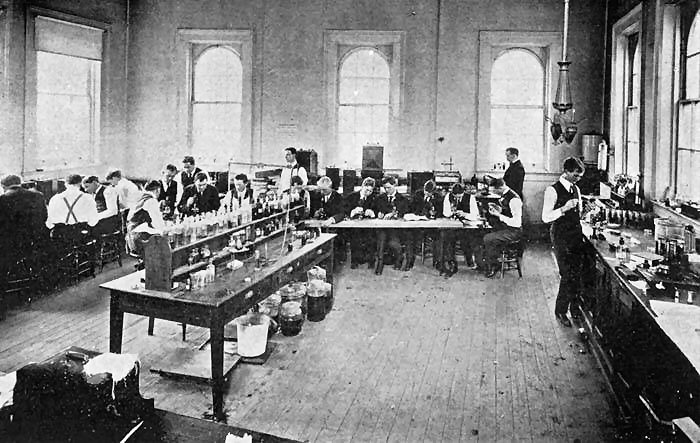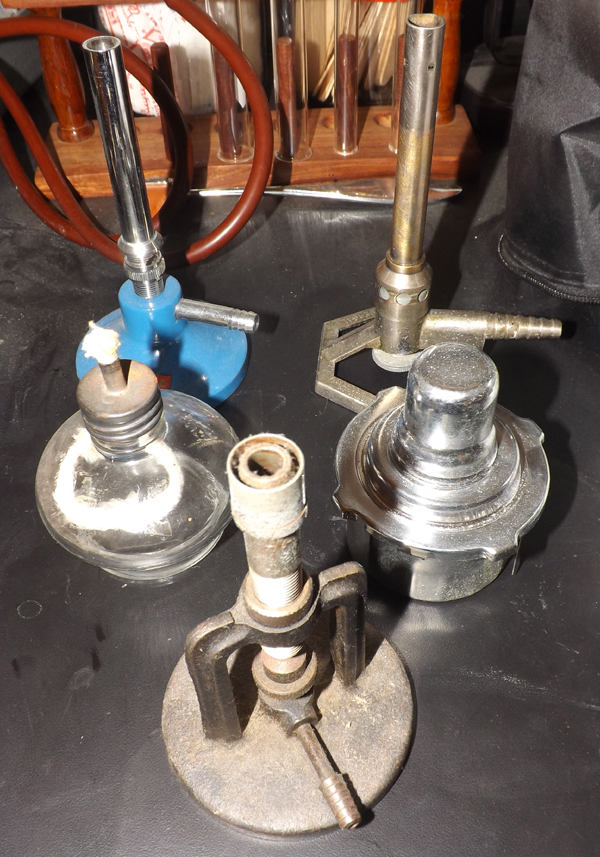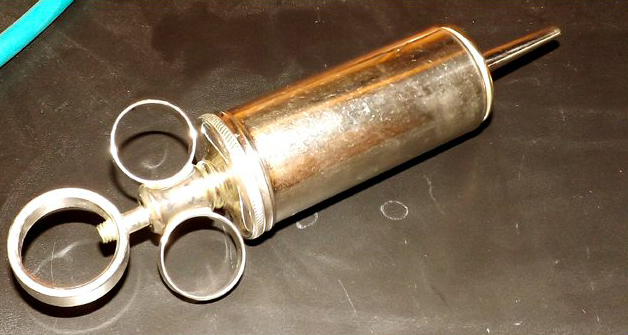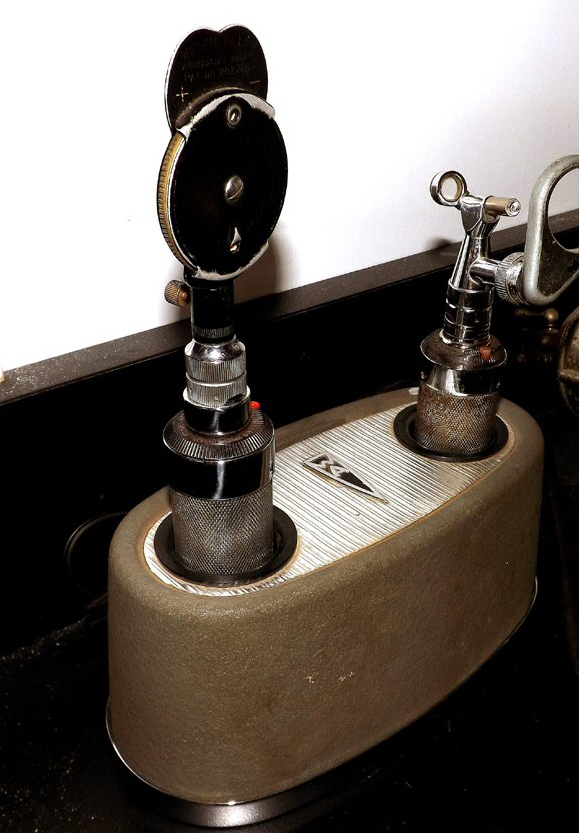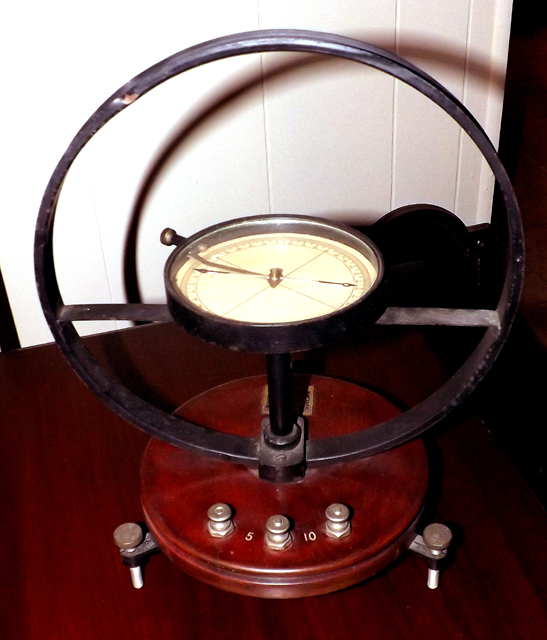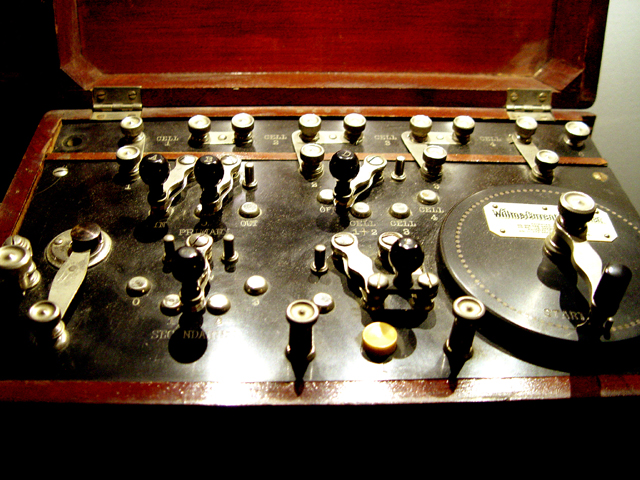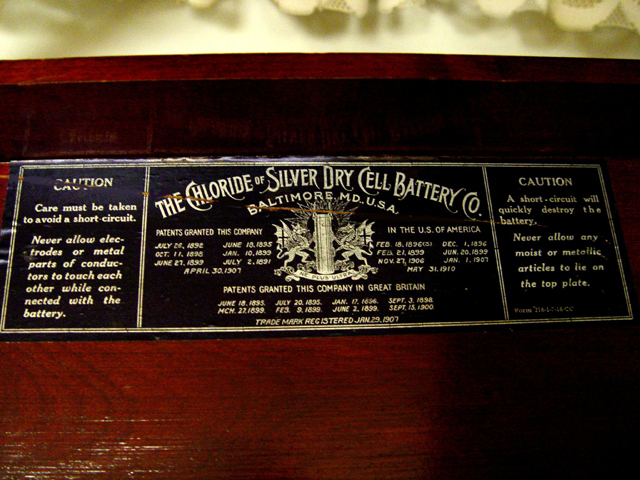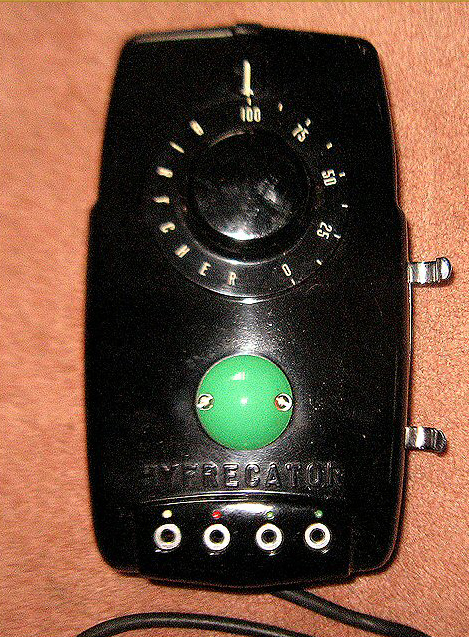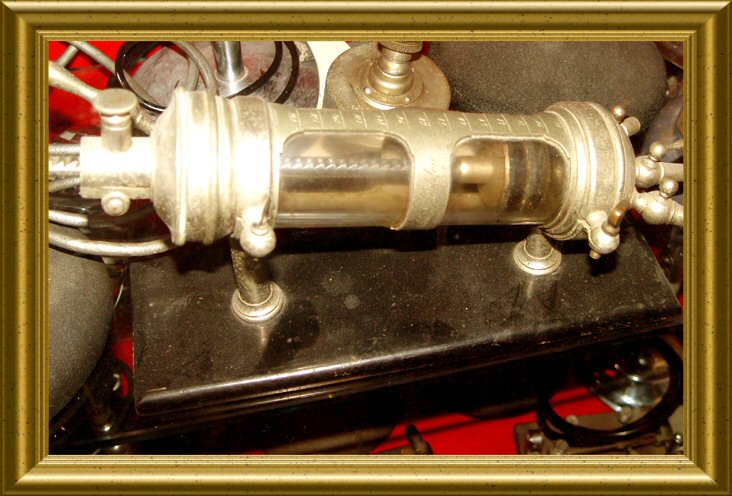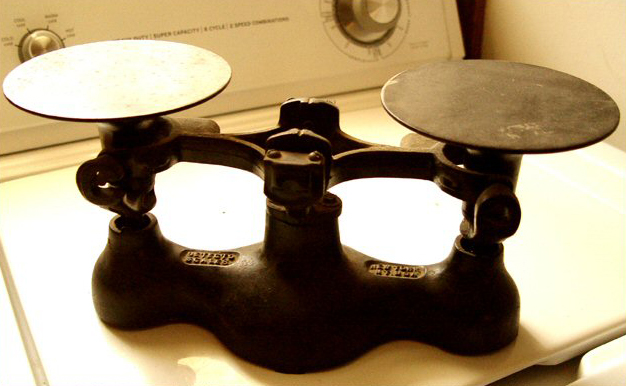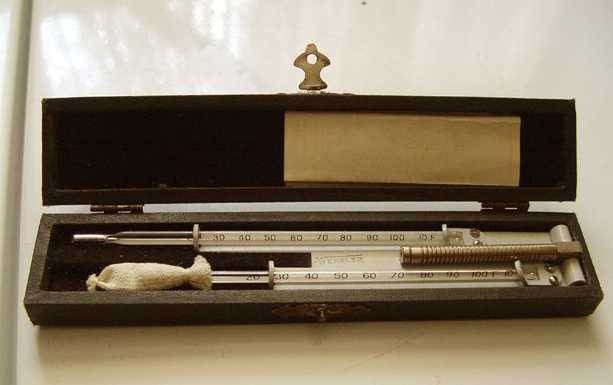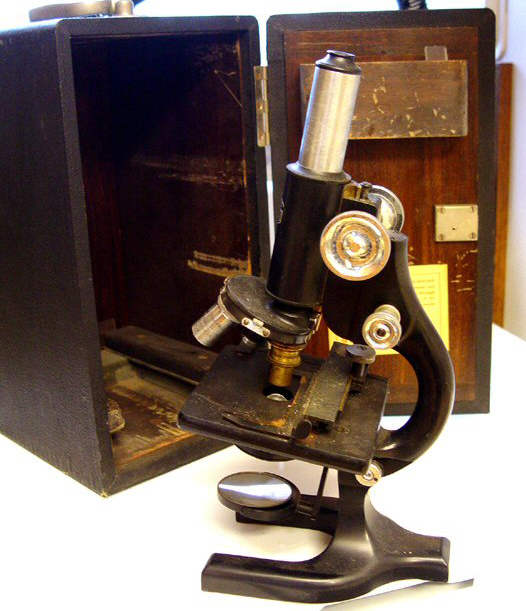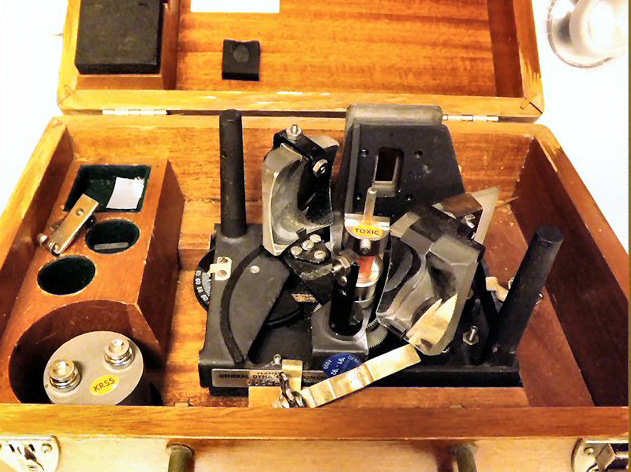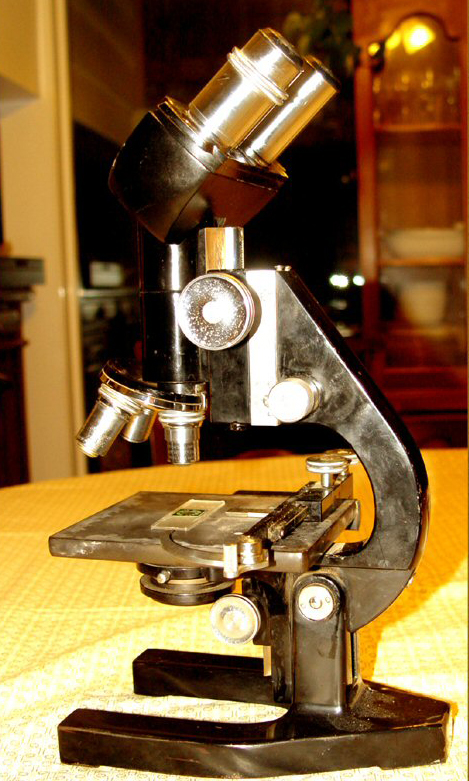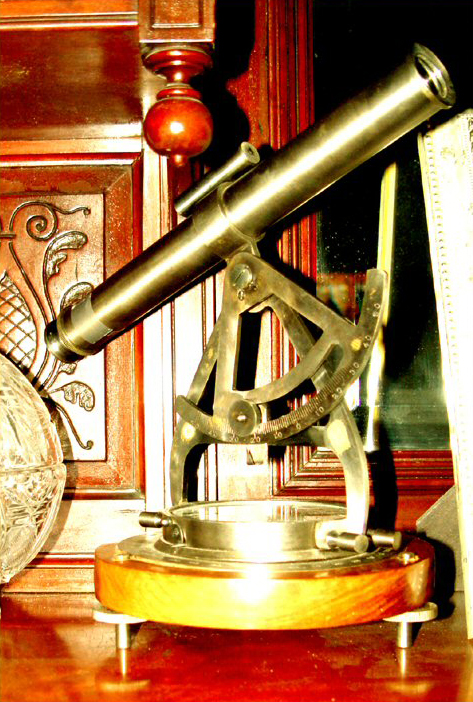|
THE MUSEUM OF YESTERDAY
MEDICAL AND SCIENTIFIC GALLERY
|
|
A portion of the Medical and Pharmacy History display at the Museum Of Yesterday |
 |
The fields of Chemistry, Medicine and Pharmacy were important in the history of the DeMajo and Bogan families. The father of our founder, Mr. DeMajo, worked in the Electrical, Mechanical Engineering and Chemistry fields. During much of his career, he maintained a laboratory on the grounds of the family's home in New Orleans.
Additionally, Mr. DeMajo's late uncle, William J. Bogan, worked as a pharmacist in the 1930s. During World War II, he closed his pharmacy practice in order to serve the war effort as an administrator at a New Orleans aircraft factory.
Mrs. DeMajo's family was heavily into the medical, dental and scientific fields as well. Her grandfather was noted New Orleans physician Dr. Euclid Richard, M.D. who served for many years on the board of directors of Louisiana's Charity Hospital System. Other members of her immediate family were dentists, physicists and engineers.
The Museum of Yesterday's medical and scientific collection is dedicated to the memory of the men and women of science in the DeMajo, Bogan and Richard families.
|
|
| |
|
The museum houses an authentic medical laboratory as would be found in a primary physician's office throughout the last century. The lab, while maintained as a display artifact, is completely functional and could otherwise be used today as a working lab to perform basic medical diagnostic tests.
And yes, for those who have emailed in to ask, the portrait visible on the lab wall at the extreme right above, is an autographed photo of Dr. Momus Alexander Morgus of New Orleans TV fame. For years, Dr. Morgus, as played by New Orleans actor Sidney Noel (Rideau), conducted his bizarre "medical" experiments on Saturday night television during the 1960's as he introduced the weekly feature "horror movie" on the "House Of Shock," which aired on several local TV stations in the New Orleans market.
|
| |
|
Tulane Medical School diploma from the year 1897, and awarded to the late Dr. Euclid J. Richard of New Orleans. Dr. Richard was a noted New Orleans physician for over 60 years, and he was a former director of Louisiana's Charity Hospital System. Dr. Richard was the grandfather of Mary DeMajo, wife of Museum Of Yesterday chairman John DeMajo. |
|
The Louisiana Charity Hospital Pathology Lab as it appeared at the time that Dr. Richard was completing his residency as a young physician.. |
| |
|
Sterilization was, and is critical to the safe practice of medicine. While large hospital boiler supplied autoclaves were in use in major medical institutions, private practice physicians' offices also needed a means to sterilize the non-disposable hypodermic needles and instruments that were used in the last century. This Pelton autoclave, which produced its own steam, and was powered by electricity, could be found in typical physician and dentist offices for most of the 1900s. |
| |
|
Often, situations required local access to sterilization in medical and dental treatment rooms. This Renwal self-contained autoclave is typical of that application. These units were also very popular in the physician "house-call" era, because a doctor could quickly sterilize instruments that were carried in the doctor's "black bag" while performing services at the home of a patient. This example is in excellent condition, and was obtained by the Museum Of Yesterday in full operating condition and with all manuals and instructions. |
| |
|
Beckman laboratory Ph meter
Laboratories in the 20th Century were required to perform testing that could not efficiently be done with the glassware and microscopes available in the previous century. The use of electronic instruments increased as these devices became reliable and readily available from manufacturers. The Ph meter shown above would have represented an investment of several thousand dollars when introduced, and it allowed labs, such as those associated with municipal water supply or well quality testing facilities, to perform extremely accurate test results that were not available with reagent testing.
|
| |
|
Laboratory heating devices, including examples of alcohol lamps and gas Bunsen burners invented by Robert Bunsen in 1854. |
|
 |
QUIZ
Here is a little quiz for our science-minded visitors. See if you know the answer:
Bottles which were used to store chemicals, were often made of dark brown glass instead of clear glass. Why was that done? (The answer is at the bottom of this page.)
|
|
| |
|
Hypodermic syringes were not always the plastic disposable instruments used in the practice of medicine today. Up until the 1960s, most injections were still done with reusable glass syringes and detachable steel needles that had to be cleaned and sterilized after each use. |
|
| |
|
While this ominous looking instrument could have provoked a bit of fear in a patient expecting a hypodermic injection, it is actually a simple syringe for irrigation of the ears, or for use during a surgical procedure where internal irrigation or suction was required. Ringed syringes were used in procedures where careful positioning of the discharge or needle was required, such as spinal taps and deep organ injections, |
| |
|
Examples of Sphygmomanometers (for checking blood pressure). The wood cased unit on the left dates to 1946, whereas the modern all metal unit on the right was manufactured in the 1980s. These instruments were extremely accurate because they relied on gravity and the weight of mercury, rather than on springs and bourdon tubes such as their modern day counterparts. In fact, the courts recognized them as the "last word" for accuracy when blood pressure and stroke diagnosis was an issue in litigation. Unfortunately, the health care industry has been forced to phase out this type of instrument because of fear of environmental contamination from the mercury required for their operation. |
| |
|
An antique laboratory Bell Jar used for placing materials into a vacuum for testing and analysis. |
| |
|
Various instruments from the doctor's practice. |
| |
|
A 1940s set of gynecological instruments from the collection of a practicing midwife of that era. |
| |
|
A Schiotz Tonoscope which was used to measure eye pressure (Glaucoma) prior to the introduction of modern computerized optical examination instruments. |
| |
|
The scientific and medical fields were responsible for the design and production of a number of interesting glass vessels and related tubing and valves This specific gravity separator can be used to extract heavier liquids which fall out of suspension in a chemical mixture. These devices were widely used in compound pharmacies and chemistry laboratories as an alternative to the centrifuge. |
| |
|
A 1912 optical scope manufactured by Henry L. DeZeng (1883-1929) Company of Camden, NJ. DeZeng's company became part of American Optical in the year 1925. In the late 1800's through the early 1920's, DeZeng was a leading pioneer in optical and ophthalmologic instruments for physicians and surgeons. |
| |
|
Dr. DeZeng's basic optical scope design was later improved upon by technology from the Welch-Allyn Company, still today a major manufacturer of physician's test instruments. This rechargeable set of DeZeng scopes remained state-of-the-art until the early 21st Century when the "grain-of-wheat" bulbs, used in these instruments since the days of Dr. DeZeng, were replaced by light emitting diodes. |
| |
|
This tangent galvanometer, built in the mid-1800s by the Milvay Scientific Instrument Company of Chicago, is an example of an early laboratory instrument that advanced the study of electricity in the days before the invention of the light bulb. |
| |
|
This Leeds & Northrup Company Model 8667 Galvanometer was used to make extremely accurate measurements of electromotive force in laboratory conditions. |
| |
|
|
Medical apparatus that uses Chloride Silver batteries to generate high-frequency electrical impulses.
In the late 1800's and early 1900's, it was a common belief that inducing high frequency electrical charges through the body would cure or prevent certain diseases. While disproved to some extent by modern science, similar devices are still made today and used in the treatment of certain degenerative nerve disorders. The unit pictured in the two photos above, dates to around 1910. |
| |
|
The Birtcher Hyfrecator was the first compact radio frequency scalpel. This type of instrument dates to the late 1940s, however, many present day physicians and dermatologists are still using the Hyfrecator. Bircher later sold the manufacturing rights for the Hyfrecator to Conned, and the modern instruments are now solid-state devices. The original Bircher units can still be found in the offices of many medical practices that were set up in the Mid-Twentieth Century. The museum's Hyfrecator is in mint condition. It has been restored and is in fully operating condition. |
| |
|
A very rare Nineteenth Century hand-operated laboratory vacuum pump. |
| |
|
Large pharmacist's balance scale from early 1900's. |
| |
|
This is a laboratory type balance beam scale from mid-20th Century. It is a highly accurate pre-digital era scale that is suitable for most scientific purposes. |
| |
|
A 1939 Welder Swing Psychrometer used to measure relative humidity |
| |
|
This is a small apothecary scale from the late 1800's |
| |
|
Antique physician's microscope manufactured in 1902 |
| |
|
A Perkin-Elmer attenuated Spectroscopy meter which is used to measure composition of materials by subjecting the material to infra-red radiation. |
| |
|
"Bacterial Laboratory" grade Bausch & Lomb stereo-optic microscope from circa 1920. |
| |
|
One exhibit in our scientific collection that draws a lot of interest from visitors is our "Jacob's Ladder." Based on the Biblical story of Jacob's dream about a ladder to Heaven, this electrical demonstration illustrates how the ionization of air lowers its electrical resistance, thereby allowing a small spark to become a large raging arc of electricity. The devices were popular in the early Frankenstein theme motion pictures, however, the Jacob's Ladder illustrates an important physics lesson
We invite you to CLICK THE ICON ABOVE to see the museum's Jacob's Ladder in action. |
| |
|
Surveyor's compass dating to 1890's. |
| |
|
1920's Surveyor's Level used by the Illinois Central Railroad engineering department
|
| |
| Answer to the above quiz about brown chemical storage bottles: The brown bottles were used to store chemicals that would ordinarily respond to or be degraded by exposure to light. |
Please Continue your tour. Click the button below and you will be returned to the "Great Hall" to visit our other collections.
|
|
Copyright 2023 The Museum Of Yesterday, Chesterfield, VA USA |
